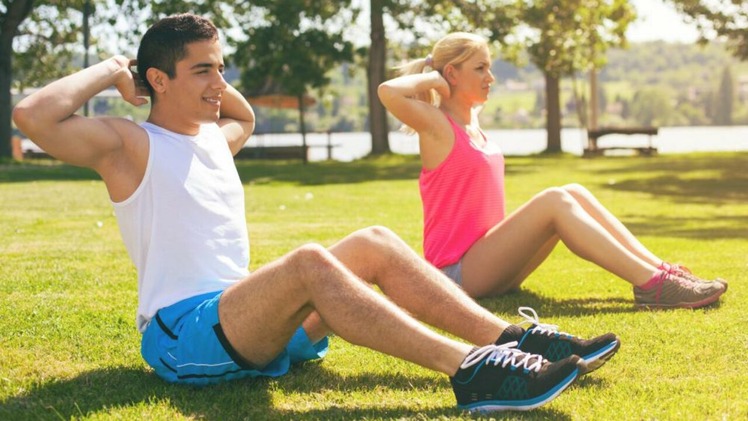Embarking on a fitness journey is a deeply personal endeavor, and recognizing that individuals have unique personality types and preferences is crucial for creating sustainable and enjoyable routines. From the serene practice of yoga to the dynamic intensity of weightlifting, tailoring fitness regimens to align with diverse personalities ensures that individuals not only achieve their health and fitness goals but also find fulfillment and joy in the process.
Understanding Personality Types
Every individual possesses a distinct personality, shaped by a combination of traits, preferences, and tendencies. While various personality frameworks exist, considering key dimensions can help tailor fitness routines to suit different individuals:
- Introversion vs. Extroversion: Some individuals draw energy from solitude and introspection (introverts), while others thrive in social settings and external stimulation (extroverts).
- Sensation-Seeking vs. Security-Seeking: The degree to which individuals seek novel and stimulating experiences (sensation-seekers) or prefer routines and familiar environments (security-seekers) plays a role in shaping their fitness preferences.
- Openness to Experience: This dimension reflects a person’s receptiveness to new ideas, experiences, and unconventional approaches.
- Goal Orientation: Individuals may be more task-oriented, focusing on specific outcomes, or more process-oriented, finding joy in the journey itself.
Tailoring Fitness Routines for Different Personality Types
- Yoga for Introverts and Security-Seekers:
- Why: Yoga provides a tranquil and introspective environment, making it well-suited for introverts who appreciate solo activities and security-seekers who find comfort in routine.
- Benefits: Improved flexibility, stress reduction, and enhanced mind-body connection.
- Variations: Vinyasa for those seeking flow, Hatha for a gentle pace, or Kundalini for a spiritual dimension.
- Group Classes for Extroverts and Sensation-Seekers:
- Why: Group fitness classes, such as dance or spin, offer a social and stimulating atmosphere, catering to extroverts and sensation-seekers.
- Benefits: Increased motivation, a sense of community, and a dynamic workout experience.
- Variations: Zumba, cycling, or HIIT classes for those seeking variety and excitement.
- Weightlifting for Goal-Oriented Individuals:
- Why: Weightlifting provides clear and measurable goals, making it appealing to those with a task-oriented mindset.
- Benefits: Strength development, body composition improvement, and a sense of achievement.
- Variations: Powerlifting for focused strength gains, bodybuilding for aesthetic goals, or Olympic weightlifting for a dynamic challenge.
- Trail Running or Outdoor Activities for Open-Minded Individuals:
- Why: Outdoor activities appeal to those open to new experiences and unconventional approaches to fitness.
- Benefits: Cardiovascular health, connection with nature, and a sense of adventure.
- Variations: Trail running, hiking, or outdoor circuit training for a diverse and stimulating workout.
- Mindful Movement Practices for Those Seeking Mind-Body Connection:
- Why: Mindful practices like Tai Chi or Pilates emphasize the connection between physical movement and mental well-being.
- Benefits: Improved posture, enhanced balance, and a focus on breath and mindfulness.
- Variations: Tai Chi for a meditative approach, Pilates for core strength, or Gyrotonic for fluid movements.
- Circuit Training for Time-Efficient Workouts:
- Why: Individuals with busy schedules may benefit from circuit training, which combines strength and cardio exercises in a time-efficient manner.
- Benefits: Full-body workout, calorie burn, and flexibility in workout structure.
- Variations: High-Intensity Interval Training (HIIT) circuits or circuit classes for added variety.
- Martial Arts for Disciplined and Goal-Oriented Individuals:
- Why: Martial arts provide a structured and disciplined approach to fitness, appealing to those with specific goals and a commitment to mastery.
- Benefits: Improved self-defense skills, increased discipline, and a sense of achievement.
- Variations: Karate for traditional discipline, Brazilian Jiu-Jitsu for ground-based combat, or Muay Thai for striking techniques.
Conclusion
Tailoring fitness routines to different personality types and preferences is a holistic approach that fosters enjoyment, adherence, and long-term success in achieving health and fitness goals. By understanding the unique dimensions of introversion and extroversion, sensation-seeking and security-seeking tendencies, openness to experience, and goal orientation, individuals can craft routines that resonate with their intrinsic motivations and preferences.
From the serene and introspective practice of yoga to the dynamic and goal-oriented world of weightlifting, the fitness landscape is diverse and accommodating. The key lies in finding the intersection between personal preferences and effective workout modalities. As individuals embark on their fitness journeys, embracing the variety of options available ensures that health and well-being become not just a goal but a fulfilling and sustainable lifestyle.
Also Read: Best Practices to Grow Your Business in the International Market

